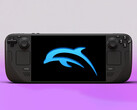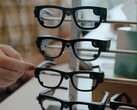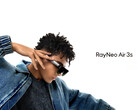The Ohio State University has developed e-Taste, a technology designed to let users experience the taste of virtual food. A recent study on this was published on Science.org. The system uses a bio-integrated interface that wirelessly transmits taste information and simulates it on the tongue with a special hydrogel. This could greatly enhance immersion in video games and virtual reality while also offering applications in other fields.
Three main components
e-Taste consists of three key components: a sensor platform that detects taste, a wireless transmission system that sends the data and an activation system that recreates the taste on the tongue. This process relies on a hydrogel, which is dispensed from a reservoir by a magnetically controlled miniature pump. The flavor is delivered through fine channels to the mouthpiece, while the electronics remain protected from saliva. The system supports all five basic tastes: sweet, salty, sour, bitter and umami.
Not without challenges
Researchers still face several challenges before e-Taste is market-ready. The system’s flavor accuracy is currently around 70 percent, making it difficult to replicate complex tastes like coffee or cake. Residual flavors can also interfere with the experience. Additionally, potential chemical interactions and the need for cooling present further hurdles.
Medical application also conceivable
e-Taste has potential far beyond gaming and VR. It could be used in online shopping, distance learning and even medicine. Buyers, for example, could digitally sample flavors before purchasing food. In education, the technology could enhance lessons in subjects like nutrition or chemistry. In medicine, it might help patients with taste loss, caused by COVID-19 or neurological conditions, by stimulating their senses and reactivating taste memories.
Reddit users would prefer an odor simulation
The Reddit community has been largely skeptical so far. Many find the idea of integrating smells into gaming and VR more appealing than tastes. Some doubt that e-Taste will ever become market-ready or gain traction in these fields, pointing to past failures like Smell-o-Vision. However, despite the skepticism, some users see potential, especially for immersive gaming and medical applications.














